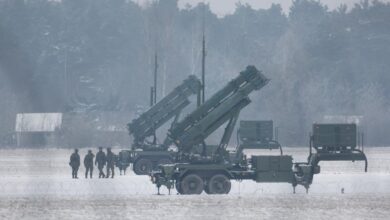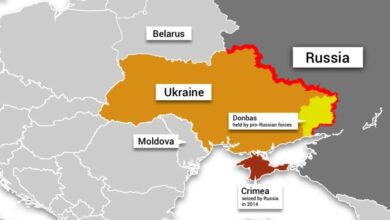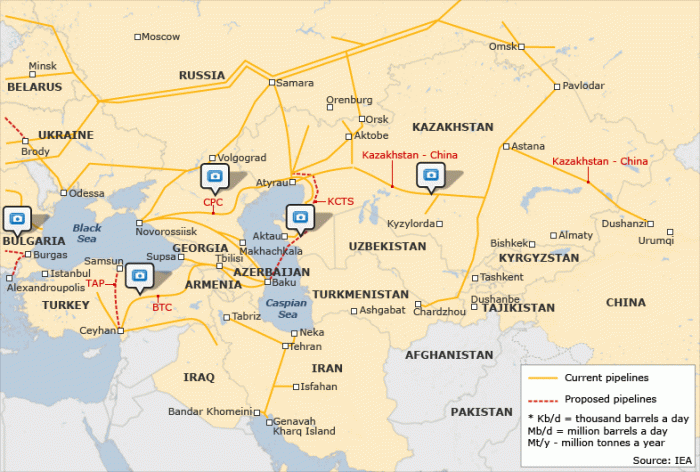
Oil Politics in Central Asia: A Geopolitical Game
Oil politics in central asia are a complex and fascinating topic, with vast reserves and production, a network of pipelines connecting producers to global markets, and a web of regional and international players vying for control. This region’s energy wealth has attracted significant attention from global powers, and the geopolitical implications are far-reaching.
From the vast oil fields of Kazakhstan to the untapped reserves of Turkmenistan, central asia holds immense potential as a source of energy for the world. The region’s strategic location, nestled between Russia, China, and the Caspian Sea, has made it a key player in global energy markets.
The flow of oil through pipelines across borders, the influence of major oil companies, and the geopolitical maneuvering of regional powers create a dynamic and often volatile environment.
Central Asian Oil Reserves and Production: Oil Politics In Central Asia
Central Asia is a region rich in oil and natural gas reserves, making it a crucial player in global energy markets. The region’s vast oil reserves and production capabilities have significantly impacted the economies of Central Asian nations, shaping their political landscapes and influencing their relationships with international powers.
Distribution of Oil Reserves
The distribution of oil reserves across Central Asian countries varies considerably. Kazakhstan holds the largest share, followed by Uzbekistan, Turkmenistan, and Azerbaijan. The distribution of oil reserves is as follows:
- Kazakhstan: Estimated to hold around 30 billion barrels of proven oil reserves, representing the largest share in the region.
- Uzbekistan: Possesses an estimated 6 billion barrels of proven oil reserves.
- Turkmenistan: Holds an estimated 10 billion barrels of proven oil reserves.
- Azerbaijan: Possesses an estimated 7 billion barrels of proven oil reserves.
- Kyrgyzstan and Tajikistan: Have relatively small oil reserves compared to other Central Asian countries.
Major Oil Fields in Central Asia
Central Asia is home to several major oil fields, contributing significantly to the region’s oil production. Some of the most prominent oil fields include:
- Tengiz Field (Kazakhstan): One of the world’s largest oil fields, producing around 25 million tons of oil annually.
- Karachaganak Field (Kazakhstan): A major gas condensate field, producing both oil and natural gas.
- Kashagan Field (Kazakhstan): A challenging offshore field with an estimated 13 billion barrels of recoverable oil reserves.
- Uzen Field (Kazakhstan): A large onshore field with an estimated 1 billion barrels of recoverable oil reserves.
- Guneshli Field (Azerbaijan): A significant offshore field, producing around 40,000 barrels of oil per day.
Oil Production Levels in Central Asian Nations
Oil production levels in Central Asian nations have fluctuated over the years, influenced by factors such as global oil prices, investment levels, and technological advancements.
- Kazakhstan: The leading oil producer in the region, with an annual production exceeding 80 million tons.
- Uzbekistan: Produces around 10 million tons of oil annually.
- Turkmenistan: Produces around 15 million tons of oil annually.
- Azerbaijan: Produces around 40 million tons of oil annually.
- Kyrgyzstan and Tajikistan: Have minimal oil production due to limited reserves.
Comparison of Oil Production Capabilities
Kazakhstan stands out as the region’s dominant oil producer, significantly exceeding the production levels of other Central Asian nations. The country’s large reserves, well-developed infrastructure, and strategic location have contributed to its leading position. While other nations like Uzbekistan and Turkmenistan possess substantial reserves, their production capabilities are limited by factors such as infrastructure constraints and technological challenges.
Azerbaijan, despite its smaller reserves, has successfully leveraged its oil production to boost its economy.
Economic Significance of Oil Production, Oil politics in central asia
Oil production plays a crucial role in the economies of Central Asian nations, generating substantial revenue and contributing significantly to their GDP.
The oil politics of Central Asia are complex, often intertwined with regional power struggles and global energy demands. The region’s vast oil and gas reserves have attracted foreign investment, but the benefits haven’t always trickled down to the local population.
This is where the issue of poverty comes into play, as it’s a major contributor to hunger, as explained in this article on the causes of hunger being related to poverty. In Central Asia, the lack of economic opportunity and the uneven distribution of wealth have left many vulnerable to food insecurity.
The situation highlights the need for sustainable development strategies that prioritize both economic growth and social equity.
- Kazakhstan: Oil production accounts for a significant portion of Kazakhstan’s GDP and exports, making it a key driver of economic growth.
- Uzbekistan: Oil production is a vital contributor to Uzbekistan’s economy, generating revenue and employment opportunities.
- Turkmenistan: Oil production is a significant source of revenue for Turkmenistan, supporting its economic development.
- Azerbaijan: Oil production has played a crucial role in Azerbaijan’s economic transformation, fueling its modernization efforts.
Pipeline Infrastructure and Transportation
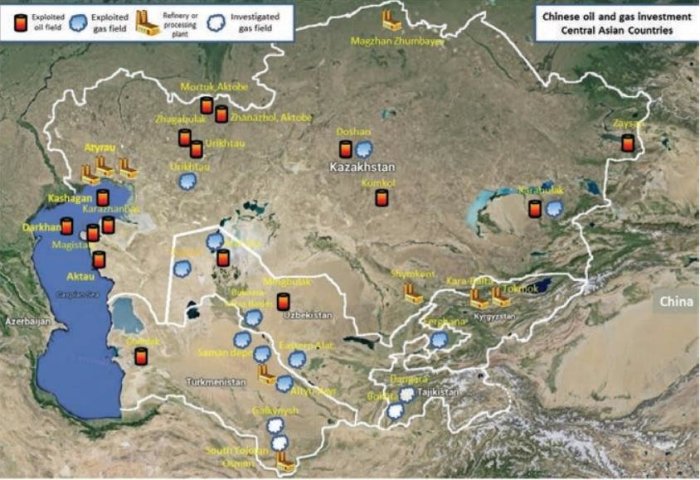
The Central Asian oil and gas industry heavily relies on pipeline infrastructure for transporting its vast reserves to global markets. These pipelines play a crucial role in connecting producers with consumers, facilitating economic development and shaping the geopolitical landscape of the region.
Key Oil Pipelines
The following are some of the key oil pipelines transporting oil from Central Asia:
- The Caspian Pipeline Consortium (CPC) Pipeline:This 1,500-kilometer pipeline runs from Tengiz and other oil fields in Kazakhstan to the Black Sea port of Novorossiysk in Russia. It is a major conduit for Kazakh oil exports and is owned by a consortium of international companies, including Russia, Kazakhstan, and several Western oil majors.
- The Baku-Tbilisi-Ceyhan (BTC) Pipeline:This 1,768-kilometer pipeline carries oil from Azerbaijan’s Caspian Sea fields to the Mediterranean port of Ceyhan in Turkey. It is a crucial route for Azerbaijani oil exports and offers an alternative to Russian pipelines.
- The Central Asia-China Pipeline (CACP):This 1,830-kilometer pipeline runs from Turkmenistan through Uzbekistan and Kazakhstan to China. It is a key pipeline for Turkmen oil exports to China and contributes to China’s energy security.
- The Trans-Afghanistan Pipeline (TAPI):This proposed pipeline would run from Turkmenistan through Afghanistan, Pakistan, and India. It is expected to be a major route for Turkmen gas exports to South Asia, but the project has faced significant challenges due to security concerns in Afghanistan.
Role of Pipelines in Connecting Central Asian Oil Producers to Global Markets
Pipelines are the primary means of transporting oil from Central Asian producers to global markets. They provide a cost-effective and efficient way to move large volumes of oil over long distances. Pipelines have enabled Central Asian countries to diversify their export markets and reduce their dependence on any single buyer.
The complex web of oil politics in Central Asia has far-reaching consequences for the region’s development. The United Nations plays a crucial role in navigating these challenges, offering a platform for dialogue and collaboration on key issues like sustainable development and resource management, as seen in their work on development issues.
By fostering a shared understanding of the complexities surrounding oil extraction and its impact, the UN can help Central Asian nations harness their resources responsibly for a more prosperous future.
Challenges and Opportunities Associated with Pipeline Infrastructure Development
Developing pipeline infrastructure in Central Asia presents several challenges and opportunities.
Challenges
- Political Instability:The region is prone to political instability, which can disrupt pipeline operations and deter investment. For example, the ongoing conflict in Afghanistan has delayed the construction of the TAPI pipeline.
- Environmental Concerns:Pipeline construction can have significant environmental impacts, including habitat destruction and pollution. This can lead to protests and legal challenges.
- Financing:Building large-scale pipelines requires significant financial resources, which can be difficult to secure in a region with limited access to capital markets.
- Technical Challenges:Pipelines often traverse difficult terrain, including mountains and deserts, which can pose technical challenges to construction and maintenance.
Opportunities
- Economic Development:Pipeline construction creates jobs and stimulates economic activity in the region.
- Energy Security:Pipelines provide energy security for both producers and consumers.
- Regional Cooperation:Pipeline projects can foster regional cooperation and economic integration.
Geopolitical Implications of Pipeline Routes and Ownership
The routes and ownership of oil pipelines in Central Asia have significant geopolitical implications. Pipelines can be used as tools of leverage by powerful states, and their ownership can be a source of tension between countries. For example, the BTC pipeline has been seen as a way to reduce Azerbaijan’s dependence on Russia, while the CACP pipeline has strengthened China’s influence in the region.
Existing and Planned Pipeline Projects
Several existing and planned pipeline projects are underway in Central Asia.
Existing Projects
- CPC Pipeline:This pipeline has been operational since 2001 and is a major source of revenue for Kazakhstan.
- BTC Pipeline:This pipeline was completed in 2006 and has significantly boosted Azerbaijan’s oil exports.
- CACP Pipeline:This pipeline was commissioned in 2009 and is a key route for Turkmen oil exports to China.
Planned Projects
- TAPI Pipeline:This pipeline is still in the planning stages, and its construction is subject to security concerns in Afghanistan.
- Turkmenistan-Afghanistan-Pakistan (TAP) Pipeline:This proposed pipeline would transport gas from Turkmenistan to Pakistan.
Regional and International Players
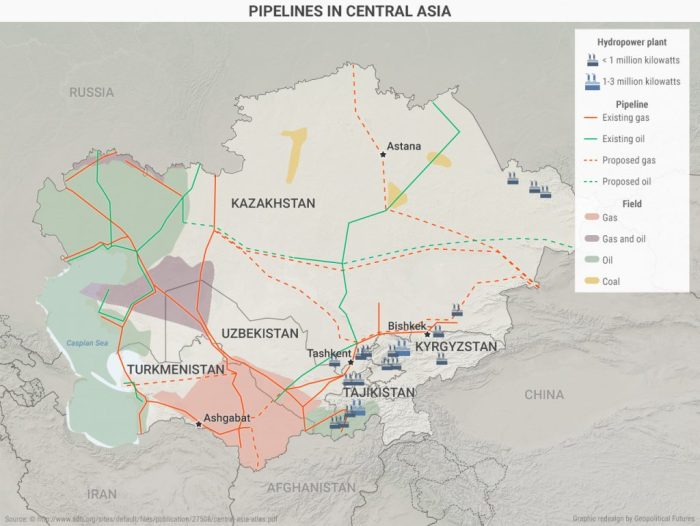
Central Asia’s oil wealth has attracted a diverse array of international and regional players, each seeking to secure their share of the region’s energy resources. The complex web of relationships and interests has shaped the region’s oil politics, leading to both cooperation and competition among various stakeholders.
Major Oil Companies Operating in Central Asia
The presence of international oil companies (IOCs) in Central Asia has been instrumental in developing the region’s oil and gas sector. These companies bring advanced technology, expertise, and financial resources, contributing to the extraction and transportation of hydrocarbons.
- Chevron:One of the largest oil companies globally, Chevron has a long history in Kazakhstan, where it operates the Tengiz oil field, one of the world’s largest oil reserves. Chevron’s operations in Kazakhstan have been crucial for the country’s economic development and have significantly contributed to its oil production.
- ExxonMobil:Another major player in the region, ExxonMobil operates the Kashagan oil field in Kazakhstan, known for its challenging development due to its location in the Caspian Sea. ExxonMobil’s involvement has been instrumental in unlocking the potential of this complex oil field.
- Lukoil:A Russian oil company, Lukoil has significant investments in Kazakhstan and Uzbekistan, playing a key role in the development of the region’s oil sector. Lukoil’s presence reflects the close economic ties between Russia and Central Asian countries.
- CNPC:China National Petroleum Corporation, China’s state-owned oil giant, has made significant investments in Central Asia, particularly in Kazakhstan and Turkmenistan. CNPC’s investments are driven by China’s growing energy demand and its strategic interest in securing oil supplies from Central Asia.
- TotalEnergies:A French multinational oil and gas company, TotalEnergies has a presence in Kazakhstan and Uzbekistan, focusing on oil and gas exploration and production. TotalEnergies’ presence in the region is part of its broader strategy to diversify its energy portfolio and secure access to oil and gas reserves.
The struggle for control over Central Asia’s vast oil reserves has often been a source of tension, and the region’s geopolitical landscape is intricately tied to global energy politics. It’s no surprise then that the US, a nation with a vested interest in maintaining its global dominance, has been directly involved in numerous armed conflicts around the world, often with the goal of securing access to vital resources.
This pattern, unfortunately, casts a shadow over the potential for peaceful development in Central Asia, where the oil industry remains a key player in the region’s economic and political future.
Influence of International Oil Companies on Central Asian Oil Politics
The presence of IOCs in Central Asia has significantly impacted the region’s oil politics. IOCs have played a crucial role in shaping the development of the oil and gas sector, influencing policies, and fostering economic growth.
- Investment and Technological Transfer:IOCs have brought significant investments and advanced technology to Central Asia, contributing to the development of the region’s oil and gas infrastructure. This has helped boost oil production and enhance efficiency in the sector.
- Economic Growth and Development:The influx of IOCs has generated significant revenue for Central Asian countries, contributing to economic growth and development. The oil sector has become a crucial driver of employment and economic activity in the region.
- Political Influence:IOCs have also exerted political influence in Central Asia, advocating for policies that favor their operations and investments. Their influence can sometimes be seen in shaping energy policies and agreements between Central Asian countries and international partners.
- Environmental Concerns:The operations of IOCs have raised concerns about environmental sustainability in Central Asia. The extraction and transportation of oil can lead to pollution and habitat degradation, requiring careful environmental management practices.
Role of Regional Powers in Central Asian Oil Production and Trade
Russia and China, as major regional powers, play significant roles in Central Asian oil production and trade. Their interests in the region’s energy resources are intertwined with broader geopolitical considerations.
- Russia’s Influence:Russia has historically been a dominant player in Central Asian oil production and trade. It has maintained close economic and political ties with the region, utilizing its influence to secure access to oil and gas resources. Russia’s control over key pipeline infrastructure and its role in the Eurasian Economic Union have given it significant leverage in the region’s energy sector.
- China’s Growing Role:China’s growing energy demand has led it to invest heavily in Central Asian oil and gas resources. China has been actively developing pipeline infrastructure to transport oil and gas from Central Asia to its western provinces. China’s strategic investments in the region are part of its Belt and Road Initiative, aimed at strengthening its economic and political influence in Central Asia.
Impact of International Sanctions and Geopolitical Tensions on Oil Flows from Central Asia
International sanctions and geopolitical tensions have had a significant impact on oil flows from Central Asia. These factors can disrupt trade, affect investments, and create uncertainty in the region’s energy sector.
- Sanctions on Russia:International sanctions imposed on Russia have affected its ability to operate in Central Asia’s oil and gas sector. These sanctions have hindered investments and made it more difficult for Russian companies to access technology and financing.
- Geopolitical Tensions in the Caspian Sea:The Caspian Sea region has been subject to geopolitical tensions, impacting oil production and transportation. The unresolved status of the Caspian Sea’s legal framework has created uncertainty about resource ownership and exploitation rights, hindering investments and cooperation in the region.
- Diversification of Oil Flows:Central Asian countries are increasingly seeking to diversify their oil export routes, reducing their dependence on Russia and China. This diversification strategy aims to mitigate the risks associated with geopolitical tensions and sanctions.
Relationship Between Central Asian Countries and Major Oil Importers
Central Asian countries have established relationships with major oil importers, including China, India, and European countries. These relationships are crucial for securing markets for their oil exports and promoting economic growth.
- China’s Growing Demand:China is the largest importer of oil from Central Asia, driven by its rapidly growing energy demand. China’s investments in pipeline infrastructure have facilitated the flow of oil from Central Asia to its western provinces.
- India’s Strategic Interest:India is also a significant importer of oil from Central Asia, seeking to diversify its energy sources and reduce its dependence on the Middle East. India has been investing in pipeline infrastructure and exploring new routes for oil imports from Central Asia.
- European Demand:European countries have also been seeking to diversify their oil imports, with some interest in Central Asian oil. However, geopolitical factors and transportation challenges have limited the flow of oil from Central Asia to Europe.
Economic and Political Implications
The abundance of oil in Central Asia has presented both significant opportunities and challenges for the region’s economic development and political landscape. While oil wealth has contributed to economic growth and improved living standards in some areas, it has also fueled political instability, corruption, and a dependence on a single commodity.
Understanding the complex interplay between oil and politics is crucial for navigating the region’s future.
Economic Benefits and Challenges
Oil production has brought substantial economic benefits to Central Asian countries. Increased revenue has enabled governments to invest in infrastructure, education, and healthcare, contributing to improvements in living standards and overall economic growth. For example, Kazakhstan, the region’s largest oil producer, has seen significant economic growth fueled by oil exports.
However, the reliance on oil revenue has also created economic vulnerabilities. Fluctuations in global oil prices can have a dramatic impact on government budgets, leading to economic instability. Additionally, the oil sector often dominates the economy, creating a lack of diversification and hindering the development of other industries.
Environmental and Sustainability Concerns
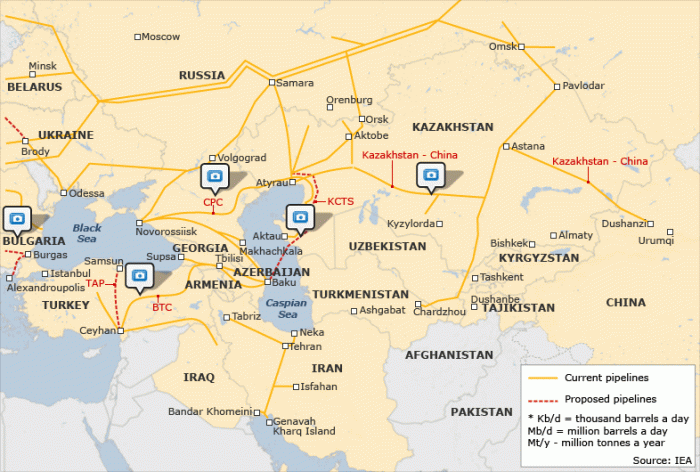
The extraction and transportation of oil in Central Asia have significant environmental consequences, raising concerns about the region’s long-term sustainability. The potential for oil production to contribute to climate change, the challenges of promoting sustainable oil production practices, and the role of environmental regulations and international agreements are crucial aspects to consider.
Moreover, exploring the potential for alternative energy sources to reduce reliance on oil is essential for mitigating the environmental impact of the region’s oil industry.
Environmental Impact of Oil Extraction and Transportation
Oil extraction and transportation activities in Central Asia have significant environmental impacts, including:
- Air pollution:The burning of fossil fuels during oil extraction and transportation releases harmful pollutants into the atmosphere, contributing to air pollution and respiratory problems.
- Water pollution:Oil spills and leaks during transportation can contaminate water sources, affecting aquatic life and human health.
- Land degradation:Oil extraction activities can lead to soil erosion, habitat destruction, and the loss of biodiversity.
- Greenhouse gas emissions:The production and combustion of oil contribute significantly to greenhouse gas emissions, exacerbating climate change.
Potential for Oil Production to Contribute to Climate Change
The combustion of oil releases carbon dioxide (CO2), a major greenhouse gas, into the atmosphere. The increasing demand for oil in Central Asia, driven by economic growth and industrialization, is contributing to the region’s carbon footprint.
The International Energy Agency (IEA) estimates that the oil and gas sector in Central Asia accounts for approximately 60% of the region’s total greenhouse gas emissions.
Challenges of Promoting Sustainable Oil Production Practices
Promoting sustainable oil production practices in Central Asia faces several challenges, including:
- Lack of regulatory frameworks:Weak environmental regulations and enforcement mechanisms can hinder the implementation of sustainable practices.
- Limited technological capacity:The region’s oil industry may lack the necessary technology and expertise to adopt advanced environmental protection measures.
- Economic constraints:Investing in sustainable oil production practices can be costly, posing a challenge for resource-constrained countries.
- Political instability:Political instability and conflicts can disrupt efforts to implement and enforce environmental regulations.
Role of Environmental Regulations and International Agreements
Environmental regulations and international agreements play a crucial role in addressing environmental concerns related to oil production in Central Asia.
- National environmental regulations:Governments in Central Asia are increasingly enacting environmental regulations to control pollution and promote sustainable oil production practices.
- International agreements:The region is a signatory to several international agreements, such as the Paris Agreement on climate change, which aim to reduce greenhouse gas emissions.
Potential for Alternative Energy Sources
Central Asia has significant potential for renewable energy sources, such as solar, wind, and hydropower, which can reduce reliance on oil and mitigate environmental impacts.
- Solar energy:The region receives abundant sunshine, making it ideal for solar power generation.
- Wind energy:Strong winds in certain areas of Central Asia offer potential for wind power development.
- Hydropower:The region’s numerous rivers and mountains provide opportunities for hydropower generation.

